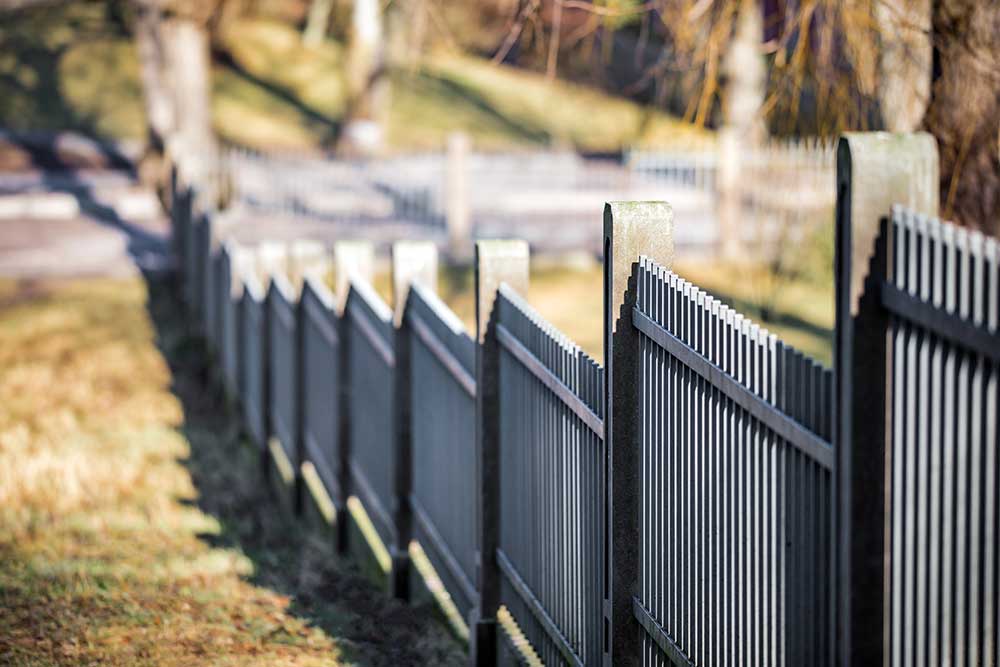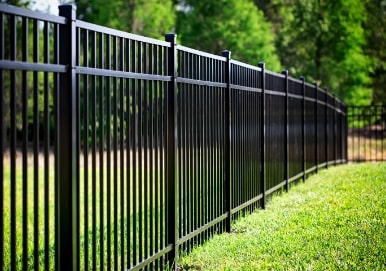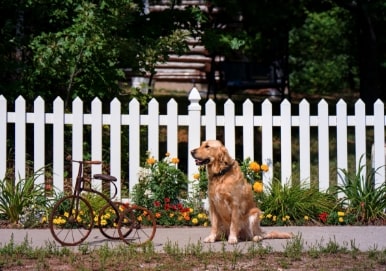Sloped landscapes present unique challenges for fence installation. Standard methods may fail to provide structural integrity and visual balance on uneven ground.
Choosing the right installation technique helps prevent long-term stability issues while offering a polished look. Installing an aluminum fence on a slope requires strategic planning, correct materials, and precise execution.

Selecting the Best Installation Technique
Sloped fences require one of two primary installation techniques: stepping or racking. The decision depends on the terrain’s gradient, fence style, and the homeowner’s aesthetic preference.
Stepping creates a uniform, tiered effect, with each panel level and posts adjusted to accommodate elevation changes. This approach suits steeper slopes but may leave gaps beneath panels that require additional landscaping or filler materials.
Racking allows the fence panels to follow the natural contours of the land. Pre-fabricated rackable panels flex to accommodate uneven terrain, eliminating large gaps. This method works best for gradual slopes and provides a continuous, streamlined appearance.
Marking the Fence Line with Precision
A well-planned fence line enables proper alignment and reduces the risk of structural weak points. Start by driving stakes along the intended path and running a taut string between them. This step reveals inconsistencies in elevation and helps determine post-placement.
Use a measuring tool to calculate the slope angle. A moderate incline may accommodate either racking or stepping. Meanwhile, sharp inclines often necessitate stepping. Factoring in soil conditions at this stage prevents future shifting and instability.
Digging Post Holes for Stability
On sloped ground, post placement determines the overall durability of the fence. Digging deeper post holes than standard flat-ground installations compensates for soil movement and erosion. A minimum depth of 30 inches helps anchor the posts securely.
Use concrete to set each post so it can fully cure before attaching panels. For areas with soft or loose soil, adding gravel at the base of each hole increases drainage and prevents shifting over time.
Adjusting Aluminum Panels to Match the Slope
An aluminum fence on a slope offers flexibility. However, precise adjustments are necessary to achieve a polished, secure installation. Rackable panels are designed to angle naturally with the slope. This makes them the best option for uneven terrain.
For stepped installations, measure and trim panels as needed to maintain consistency. Cutting panels slightly longer than required allows for fine-tuning on-site. Use a level to confirm alignment before securing panels to posts.
Closing Gaps and Enhancing Stability
Gaps between stepped panels and the ground create security concerns and may detract from the fence’s aesthetic appeal. Closing these spaces requires creative solutions such as retaining walls, soil grading, or decorative landscaping elements.
For high-security installations, consider adding a lower rail or planting dense shrubs along the fence line. These enhancements strengthen the barrier while maintaining a visually appealing finish.
Long-term Maintenance for Sloped Installations
Proper maintenance extends the lifespan of an aluminum fence, especially on uneven ground. Periodic inspections help identify shifting posts, loose fasteners, or soil erosion before they become major problems.
Rinsing the fence with water removes dirt buildup. Meanwhile, checking for scratches or minor damage prevents corrosion. If soil erosion affects post stability, reinforcing the base with compacted dirt or gravel keeps the structure secure.
Custom Aluminum Fences for Slopes – Secure and Stylish Solutions in Richmond, VA
Installing an aluminum fence on a slope requires precise execution. Locally owned and operated, Good Neighbor Fence has been serving Richmond, VA, since 2006 with high-quality residential and commercial fencing solutions. Our in-house team specializes in precise aluminum fence installations for a secure and polished look on any landscape.
If your property has a gradual slope or steep terrain, we tailor each project to fit seamlessly. With financing options starting at 0% APR, getting the perfect fence has never been easier.
Contact us today for a free quote, or call (804) 737-4664 to speak with our experts. Let’s choose a durable, stylish fence type for your property.





